Choosing the right rowing machine for your home gym can be a perplexing task. With the market offering a variety of resistance types, the most prominent being water and air rowers, it’s essential to understand their differences and similarities.
Both offer a comprehensive full-body workout, burning calories and improving cardiovascular health, yet they do so through distinct mechanisms and with varying features that could sway your preference.
Understanding the nuances between water and air rowers is key to selecting a machine that aligns with your workout needs and preferences. While they share some commonalities in the muscle groups they target and the general technique used, aspects such as price, storage convenience, noise level, and the technology provided through their monitors vary.
Key Takeaways
- Water and air rowers offer different resistance mechanisms, each with unique benefits for a full-body workout.
- Price, noise level, and tech features like monitors can influence your choice between a water or air rowing machine.
- Both types of rowers engage the same muscle groups using similar rowing techniques despite their operational differences.
Water Rowing Machine
Resistance Operation
Your water rower provides unique resistance through the interaction between the paddles and water in the tank stationed at the front. When you pull the handle, it rotates the paddles through the water, generating drag.
The intensity of your workout increases directly with your pace—the quicker you row, the more the resistance. It’s that simple: the harder you row, the more force you need to exert.
Water Level Adjustment
Adjusting the water level in your rowing machine’s tank doesn’t increase resistance; rather, it changes the “weight” of your simulated boat.
More water equals a heavier feel, akin to moving a bulkier boat through the water. This gives a more strength-oriented workout. Your machine will come with a manual describing how to adjust the water level based on your preferences and physical capacity.
Monitors
Expect a functional and straightforward monitor with your water rowing machine. While not as advanced as some air rower monitors, the top-tier option like WaterRower’s Series 4 (S4) features various metrics like stroke rate, distance, and heart rate.
Furthermore, it allows for a connection to a PC, offering gaming and worldwide competition connectivity. Ideal for home use, this monitor should satisfy most of your tracking needs unless you are aiming for competitive rowing benchmarks.
Other Features
Apart from the resistance, water rowers offer a myriad of other appealing traits:
- The Sound: The water rower creates a soft, rhythmic sound as you row, which many find calming—a sharp contrast to the often louder air rowers.
- Aesthetics: Boasting a wooden frame, water rowers can blend seamlessly into your home decor, doubling as a piece of furniture.
- Upright Storage: Save space with the easy-to-store design, with the water tank ensuring the machine remains stable when stored upright.
- Strap vs. Chain: A strap is utilized instead of a chain for a quieter experience, reducing noise and making TV watching or conversations undisturbed.
- Build Quality: The wooden construction not only looks good but also serves to dampen noise and vibration, enhancing the feel and durability of your machine.
Air Rowing Machine
Resistance Operation
As you row faster on an air rowing machine, the spinning flywheel creates more air resistance. This variable resistance means the harder you pull, the more the air particles push back against the flywheel, providing a dynamic workout.
Your own efforts determine the resistance level, thanks to the rule of cubes which creates an exponential relationship between your rowing speed and the resistance you feel.
Damper Setting
Adjust the damper on your air rower to alter the “feel” of your stroke, similar to changing gears on a bicycle. Settings range from 1, for a light and easy stroke, up to 10 for a more intense, heavy rowing experience.
While the setting doesn’t change the resistance, it does modify the amount of air interacting with the fan, altering the feel of your row. As you move the damper to a higher setting, you’ll notice your strokes feeling similar to rowing a heavier boat.
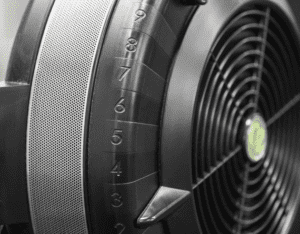
Monitors
The enjoyment of tracking workout data comes from the advanced monitors found on high-end air rowers. Take the Concept2 RowErg PM5 monitor, acclaimed for its precision in tracking distance, speed, power, and more. Its live drag factor recording compensates for environmental variances, so you get consistent data.
Whether it’s a casual row or a competitive sprint, rest assured, your performance is measured accurately, allowing you to even virtually compete with rowers worldwide.
Other Features
Other practical aspects of air rowers include:
- Folding seat rails for a reduced footprint and easier storage.
- Lighter overall machine weight due to the plastic flywheel design.
- Noticeable “whooshing” sound with each stroke — a heads-up if you’re rowing around others or need to keep the noise down.
With these features, air rowing machines hold their own as a top choice for home workouts, suiting a range of preferences and fitness goals.
Water vs. Air Rowing Machine
Similarities
Understanding the common ground between water and air rowing machines will help you recognize that regardless of your choice, you’re embarking on an effective fitness journey. Here’s what they share:
- Frame and Size: Both types have long frames and sizable footprints, suiting even tall users.
- Weight Capacity: Sturdy design accommodates heavy users, with some models supporting 300+ lbs.
- Variable Resistance: Experience variable resistance with both; the harder you row, the greater the resistance.
- Suitability for HIIT: Thanks to the variable resistance, both machines are excellent for HIIT workouts.
- On-Water Feel: Both aim to recreate the resistance of rowing on actual water.
- Customization: Adjust the rowing stroke feel by adding or subtracting water, or modifying the damper settings.
- Technique: The rowing technique does not change; it remains consistent across both machine types.
- Mechanism: Both operate with a handle connected to a rowing strap or chain.
- Muscle Engagement: The same muscle groups are targeted, ensuring a full-body workout.
- Industry Reputation: Both water and air rowers are highly regarded in the fitness community.
Differences
While the basic premise of rowing machines is the same, there are key features that set water and air rowers apart, affecting your workout experience.
- Price:
- Water rowers generally start at a higher price of around $700, with premium models upward of $1,100.
- Air rowers cover a vast price range from $300 to $1,000+, making them more accessible to different budgets.
- Noise Level:
- Water rowers offer a quieter, often soothing experience with the sounds of water splashing.
- Air rowers generate a distinct “whooshing” noise from the fan, louder and potentially disruptive (although some also find it meditative).
- Monitor Quality:
- Water rowers have advanced monitors, but air rowers can boast the top-tier, most accurate monitors, ideal for tracking data and performance.
- Stroke Feel:
- Water rowers provide a strong catch followed by a lighter finish, emphasizing the initial force applied.
- Air rowers give a gentle catch with increasing resistance towards the finish, changing the dynamics of the stroke.
- Aesthetics and Design:
- Water rowers, particularly those with wooden frames, blend into home décor, offering a pleasing aesthetic.
- Air rowers tend to have a more industrial look, resembling traditional gym equipment.
- Storage:
- Water rowers usually have an upright storage position, often with wheels for easy movement.
- Air rowers may offer a foldable design, also with wheels, for convenience and space-saving.
- Weight:
- Water rowers tend to be heavier due to their water tanks, influencing the smoothness of the rowing experience.
- Air rowers can be lightweight, depending on the construction materials used.
If you’re in the market for a rowing machine, understanding these nuances can be critical in shaping your decision. Reflect on your personal preferences and practical needs such as space, storage, and the calming aspect of exercise.
Whether you prioritize a meditative, aesthetic, and soothing workout or a robust, data-driven session with advanced monitoring, there’s a rowing machine tailored to your lifestyle.
Differences in Noise Level
When considering the noise levels between air and water rowers, here’s what you need to know:
- Air Rowers: On average, these machines produce about 70 decibels of noise, comparable to the loudness of street traffic.
- Water Rowers: These are generally quieter, emitting around 63 decibels, akin to normal conversation levels.
The difference is due to the mechanisms each machine uses to create resistance. Air rowers create a constant whirring sound as the flywheel spins, while water rowers generate a softer sloshing from the water tank. If a low noise level during your workouts is a priority, you might prefer the gentle whoosh of the water rower over the more pronounced sound of the air rower.
For a closer look at the acoustic differences, watch the video below, which includes sound demonstrations of various rowing machines, including magnetic models.
Final Thoughts
Selecting between water and air rowing machines is a matter of personal preference, aligning with your workout needs. Here’s some guidance to help with your decision:
For Racing and Training Enthusiasts: Air rowing machines are ideal for tracking progress and pushing competitive boundaries.
The world's best-selling rowing machine. Adjustable air resistance & easy storage. Comes with a device holder for your smartphone. You can't go wrong with this rowing machine.
- Best overall rowing machine on the market
- Connects with heart rate monitors
- 5 year frame warranty
- Fan can be too noisy for some
- Not the cheapest
For a Quieter, More Natural Experience: Water rowing machines provide the soothing sound of water, perfect for a tranquil workout environment.
The original WaterRower. Quieter than expected with a smooth rowing stroke very close to actually rowing on the water. Gorgeous design. Stores in a surprisingly small space.
- Smooth water-like rowing feeling
- Hand-made in USA 🇺🇸
- Great warranty
- The S4 monitor is adequate, but as good as the PM5 on the Concept2
Looking for a Budget-Friendly Option? Stamina Air Rower 1399 is an affordable air rower without compromising on quality.
Side-by-Side Comparisons: Compare features and prices of different models to find your match. View the comparison chart.
Your ideal rowing machine should fit effortlessly into your life, offering either the lively dynamic of a race or the calmness of a serene river – the choice is all yours.
Enjoy your rowing journey, and feel free to share your experiences or questions; they’re always welcome!
Frequently Asked Questions
What are the primary differences between water and air rowing machines?
- Resistance Mechanism: Water rowers use a water tank and paddles to create resistance, emulating the feel of rowing on water. Air rowers generate resistance through a flywheel with fan blades; the resistance adjusts with your rowing intensity.
- Noise Level: Air rowers tend to be noisier due to the spinning of the flywheel. Water rowers are generally quieter, offering a gentle swooshing sound.
- Maintenance: Water rowers require occasional water tank treatment to keep the water clean. Air rowers need minimal maintenance, usually just keeping the fan and chain or belt clean.
How does the resistance feel compare between water rowers and air rowers?
With water rowers, you’ll feel a smooth, consistent resistance at the beginning of each stroke that closely mimics the dynamics of rowing on water.
On an air rower, the resistance is more dynamic, with a lighter feel at the start and increasing as you pull harder, potentially providing a more challenging workout as your speed increases.
What are the benefits of using a water rowing machine?
- Realistic Rowing Sensation: The resistance from the water gives a true-to-life rowing feel.
- Aesthetic and Sound: Water rowers often have a sleek, wooden frame and provide a soothing water sound that adds to the experience.
- Consistent Resistance: Offers a consistent pull throughout the stroke, ideal for a rhythmic workout.
Which type of rowing machine offers the most realistic rowing experience?
Water rowing machines are typically known for delivering a rowing experience that’s closest to actual water rowing due to the natural resistance created by the water in the tank.

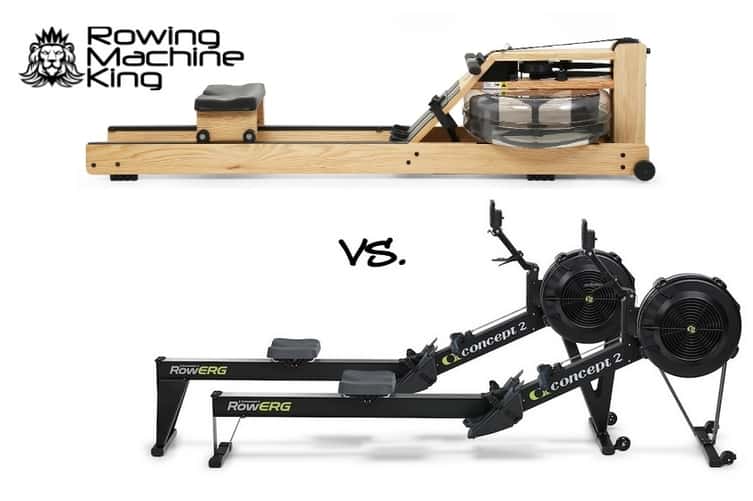
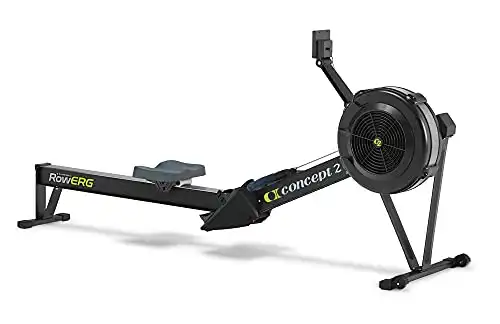
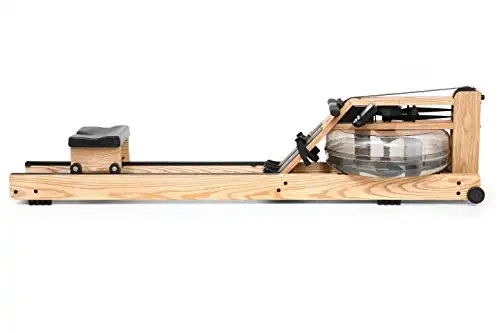
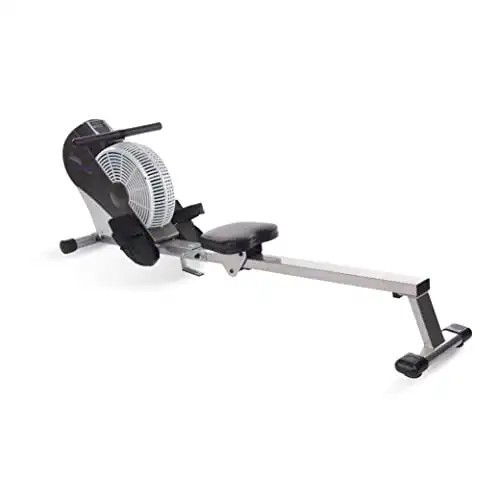
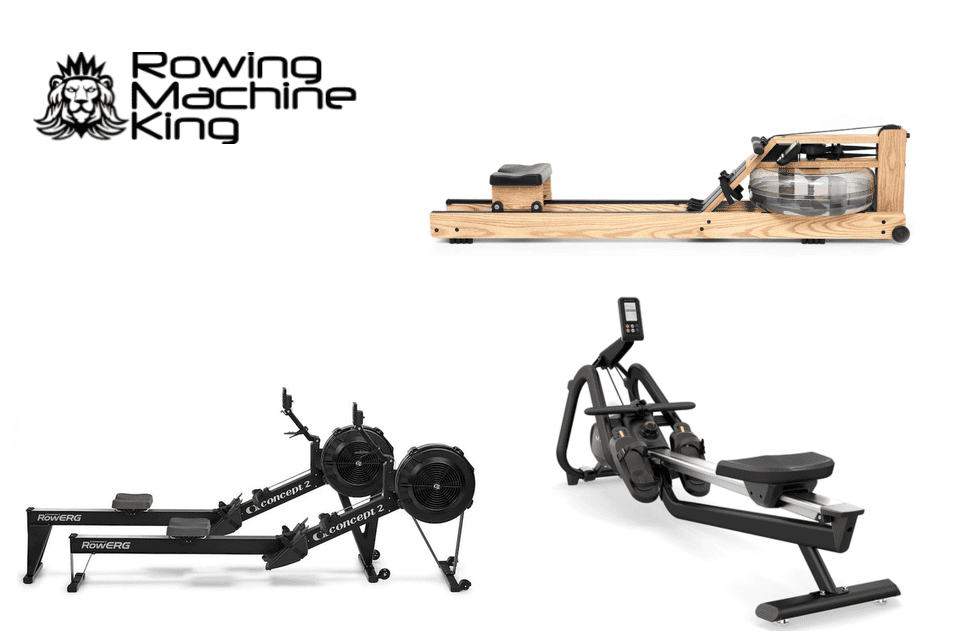
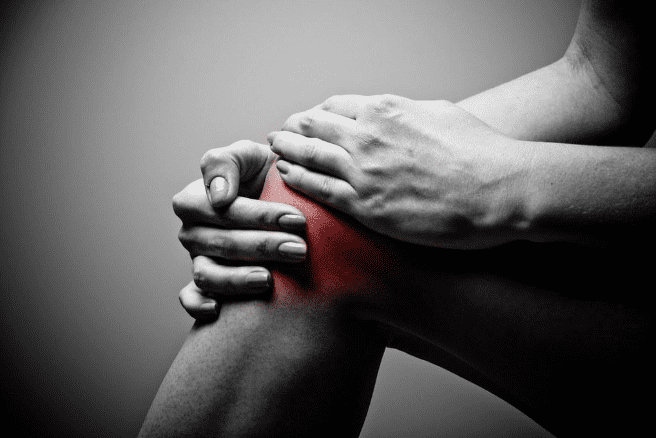
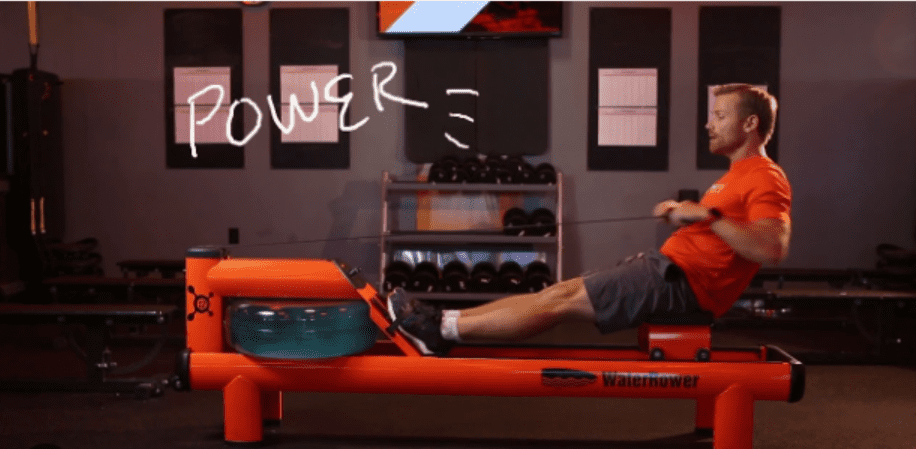
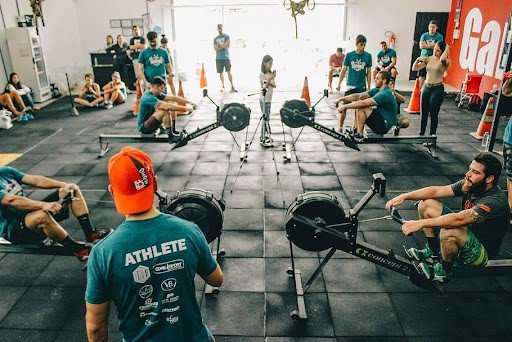
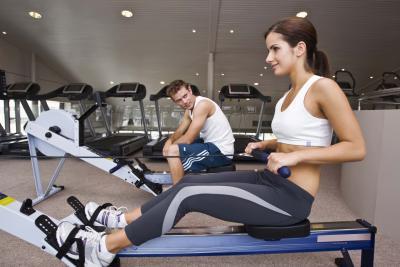
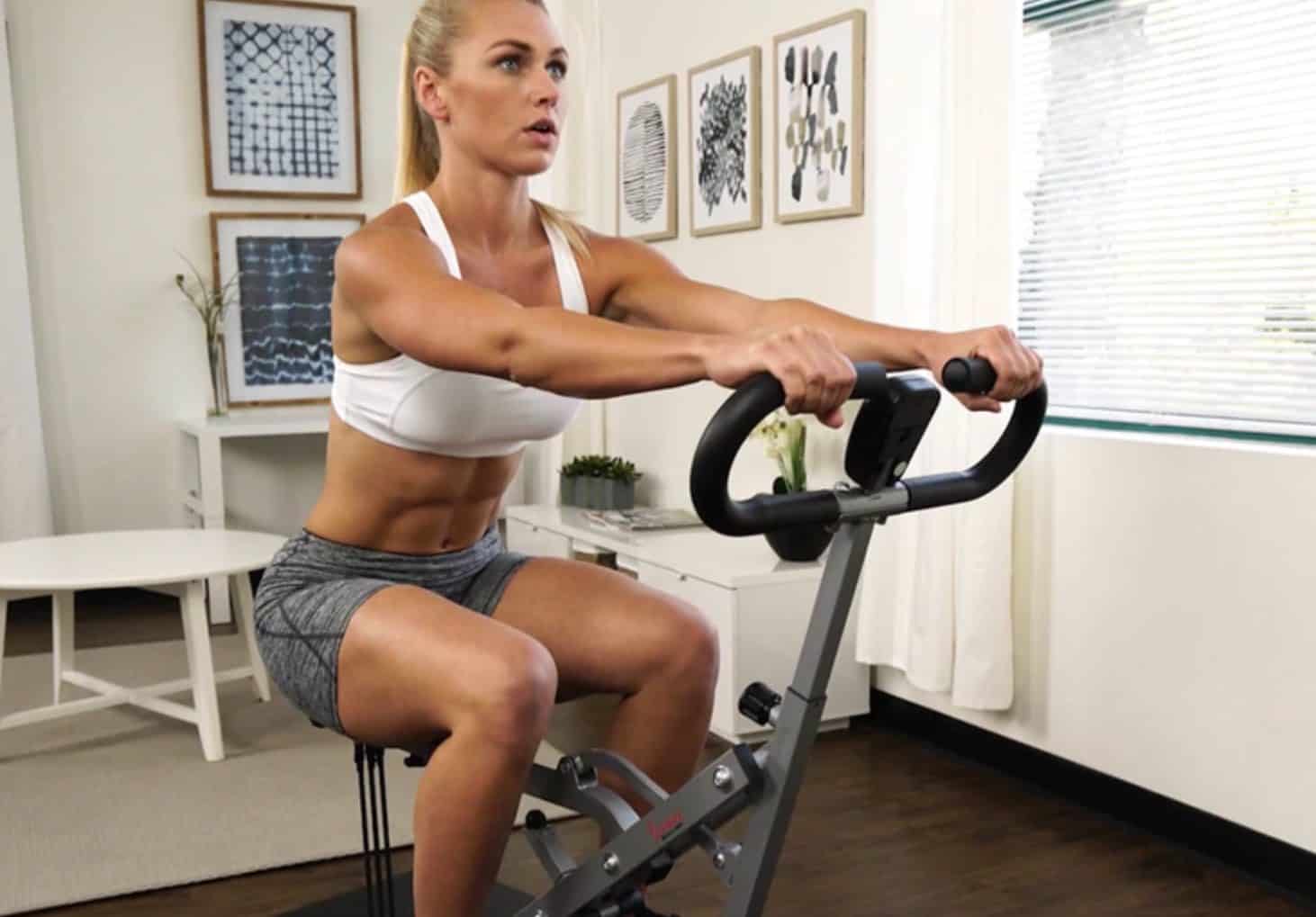
17 million meters after purchasing in April 2012, I say Concept2 all day everday.
mmmm interesting person!
Hmmm… that’s a lot of noise to put up with over 17 million meters. I say Waterrower all day everyday.
Totally agree. Water rower!!!
Hi there!
is there any possibility the tank of water rower to break if you stroke too strong?
can the material of the tank change into more high quality material?
which is more easier to fabricate, manufacture, either water rower or air rower?
you’ve said : “If you are looking for race, train and bla bla bla, i would choose and air rowing machine. how about same concept (for race), is it okay to do with water rower?
thank you so much!
Hi Muzaffar,
The tanks are very strong on the water rowers and I rarely hear of them breaking from rowing. The only time they break is when people slam them into something while moving the rower. There are also long warranties on the tanks that cover a period long enough to discover any factory defects.
On a high quality air or water rowing machine you will not have to worry about anything breaking from normal rowing. Literally the worlds strongest man broke the 100m record on a Concept2 and rowed as hard as he possibly could and nothing broke on the rowing machine. Here is the video.
I do not know which is easier to manufacture.
As far as “racing”, I said an air rowing machine is better because the Concept2 is the only model used for indoor rowing competitions, setting world records, and entering your actual scores online. It is because their monitor can calculate the drag factor of the flywheel in real time and accurately calculate distance and time. Small changes such as dust build up, air temperature, and humidity will not change the times between different machines because the drag factor is calculated every stroke.
This is not done on any water rowing machine so your times will not be as accurate. You can definitely compare times on your water rower and race people from around the world who use the same brand but that community will be much smaller.
There are plenty of people who use a water rower to race and train on but it’s just not as popular. Even some Olympians, such as Xeno Muller, believe water rowing machines are superior to air. I just feel at this time air rowing machines have the better monitors than water rowing machines.
Hope this helps!
Great video! Wow, are those Concept2s LOUD!
Hi Edwin,
Great article! I am seriously considering purchasing a rowing machine and I am torn between the WaterRower and Concept2. I have 3 issues with the WaterRower.
1.) I keep reading about cracks and leaks that develop in the water tank. WaterRower even offers a tank repair kit for this very issue. It seems to me that this is a design flaw that they refuse to address, instead offering a fix for when it eventually occurs. Have you seen these tanks to eventually leak? I’m surprised they haven’t tried a one-piece tank.
2.) I’ve also read about how the seat of the WaterRower is slightly angled back which for some could cause lower back pain. Any thoughts on this? Any way to make the seat perfectly horizontal?
3.) I haven’t read one good thing about the foot rests. How do you think they compare with the C2?
These issues aside, I love the look of the WaterRower and the idea of hearing water instead of a fan. The Concept2 seems to have garnered a ton of respect from the indoor rowing community and I can’t overlook that.
Thanks again for a great article!
Hi Jason,
You can visit my Concierge Page and fill out the form so I can have a better idea of what you are looking for in a rower.
I’ll also be able to give a more detailed response.
Thanks!
Hi, just wondering what you ended up getting? I am also torn between water rower and concept 2.
Hey! I actually have the Concept2 because I enjoy using the highly accurate monitor. The benefit is you can compare your times to people around the world who are also looking to get the best times. This motivates me to compete against other rowers who are close to the same age, weight, and height.
What is the speed differential over 500m? I have heard the water tower typically paces faster than the Concept 2. If so, by what amount? For example, a 1:45 not the Concept 2 could be a 1:40 or 1:30?
Hi Stuart,
When comparing split times on air vs. water rowing machines, you will usually find faster times on water rowing machines. Unfortunately, there isn’t an exact measurable difference. Each rowing machine model is different, so you would have to compare 2 models like a WaterRower with S4 monitor vs. Concept2 with PM5.
Then you would have to have a machine pull at the exact same watts for a set difference and compare splits. A human has too much error to do this type of experiment.
The only data we can go off of is people who row a lot, know there times, and use both models. Then you could compare if you normally row a 7 min 2K (1:45/500m) on a Concept2 and then use a WaterRower and row a 6:40 min 2K (1:40/500m) you would know the split is faster by about 5 seconds.
Air rowing machine monitors (Concept2) are far more accurate, which is why they are used for training and world records.
I have heard average watts are closer on both machines. So if you took your average watts and put them into the C2 calculator you may get a better comparison.
I have not done a ton of research on this topic so let me know if you find anything new! Thanks!
I’m considering the water rower but am afraid the resistance may be to easy. Does the difficulty ever max out or can you just keep going faster and faster where the pulley barely moves? Concerned that after using it awhile it may lose its usefulness as I adapt to the effort required.
Hi Dave,
I would not worry about maxing out a water or air rower if you are able to row faster and pull harder. Meaning, you are able to up your stroke rate from 20 strokes per minute to 28 strokes per minute while also pulling with more force.
Some older people cannot row this fast and can only row at a slower pace. If you want to row slowly but feel strong resistance you should look into a magnetic rower. You can read my air vs. magnetic article to learn about the difference between variable and adjustable resistance.
However, I own an air rower and have zero worries about maxing out it’s ability. I can completely exhaust myself on any type of workout. Air and water rowers are the chosen resistance type by Olympic athletes and any athlete looking to train their full-body cardio. I don’t think they would choose this resistance type if they felt they could max it out.
Check out the worlds strongest man completely exhausted after just 13 seconds. You can also see other videos of people rowing on water and air rowers who are very fit and completely exhausted after rowing.
Is there a comparison chart anywhere that shows what to set a concept 2 at if a water tank is filled tank is filled to a certain level? Or vice versa.
Hi Todd,
Sorry but I have not heard of a comparison chart like this. This would require someone to create independently as I wouldn’t expect WaterRower and Concept2 to work together on this project. It would also differ between brands.
I’m a rower and did two 2ks in one week – the first on as a club test going into the summer, done on a standard Concept2 Model D, and the second as a jolly on a Water Rower at a gym-organised competition, four days later and after a training session on the water.
On the Concept2 I pulled a 1:39.3 split for a 6:37 time, and on the Water Rower a 1:27.5 split for a 5:50 time.
Since I am a lightweight club rower and not an Olympic heavyweight I can only deduce that water rowers are ludicrously generous in their speed calculations – whereas the Concept2 is meant to be very close to actual boat speed assuming good technique and flat conditions
Hi Alex,
Thank you for the comment and information! That is very helpful, as I get a lot of questions about this.
Great times btw! We’d love to hear back on any other great findings you have on the rower.
This is roughly similar to my observations with my WR. I have an excel table to compare using a calculation of Watts to pace that I picked up on a Reddit and the Concept 2 published power conversions from their site. I get these results:
Power Pace WR Pace C2 1k WR 1k C2 2k WR 2k C2 5k WR 5k C2
342.2 01:24 01:40.8 02:48 03:22 05:36 06:43 14:00 16:48
323.7 01:26 01:42.6 02:52 03:25 05:44 06:50 14:20 17:06
306.5 01:28 01:44.5 02:56 03:29 05:52 06:58 14:40 17:25
290.6 01:30 01:46.4 03:00 03:33 06:00 07:06 15:00 17:44
275.9 01:32 01:48.3 03:04 03:37 06:08 07:13 15:20 18:03
262.2 01:34 01:50.1 03:08 03:40 06:16 07:20 15:40 18:21
249.5 01:36 01:51.9 03:12 03:44 06:24 07:28 16:00 18:39
237.6 01:38 01:53.8 03:16 03:48 06:32 07:35 16:20 18:58
226.5 01:40 01:55.6 03:20 03:51 06:40 07:42 16:40 19:16
216.2 01:42 01:57.4 03:24 03:55 06:48 07:50 17:00 19:34
206.4 01:44 01:59.2 03:28 03:58 06:56 07:57 17:20 19:52
201.8 01:45 02:00.1 03:30 04:00 07:00 08:00 17:30 20:01
For anyone wanting to replicate this, the equation to get from waterrower pace to power in watts is: Watts =(5.0274*(y/500)^-2.366) where y is the waterrower 500m split in seconds. Thanks to the guy on reddit for the equation.
Thank you for the info Dan! Any links to the resources would be appreciated as well!
Hi Edwin
I got the calculation from here:
https://www.reddit.com/r/orangetheory/comments/7cp37a/comparison_of_pace_to_wattage_on_the_waterrower/
The spreadsheet isn’t online anywhere but if you want a copy, drop me an email and I will send it to you.
Awesome, thanks!!
You’re exactly right – just a simple 500m row is normally 1:51 for me on a Concept, but today was only a 1:31 on a water rower. While I would love to thin it’s improvement, a 20 second difference is definitely the equipment.
Resistance plays a part. Water often doesn’t provide as much resistance.
What would you say for an intermediate jogger, and HIIT workout 5x a week, would be better,
– Water rower First Degree Newport Challenge
– Air Rower Stamina X
I’d say the Newport Challenge. I feel it’s just a better rowing machine in general but it usually cost almost 2x as much as the Stamina X
Thanks for the advice man… awesome review on your article!!
I have a Sunny Water Rower. I have very little rowing experience. My Concept2 time for 500 meters is about 3 minutes (I am 70 years old)On the water rower it is over 5 minutes, same stroke rate.
Sunny explanation is that the water rower has a shorter stroke the the Concept2. So I need more strokes (2x) to cover same distance. Make sense?
Not sure if you can help me. In my dragon boat club I have been asked to record a 2 minute row on a Concept 2 rower. I only have access to a Lifespan rower which I think uses magnets? Will I record a similar distance?
Thanks
Hi Linda,
You would really need to do the test on a Concept2. The reason this rower was requested is due to the very accurate monitor and the way it can recalculate the deceleration of the flywheel and accurately record distance/time.
The Concept2 has the best monitor which is why it is the only rower used for World Records and any of the indoor rowing championships. Magnetic rowing machine monitor would be quite a ways of from the Concept2 and would vary based on resistance level.
I would try to find one at a local gym and do your test.
Hope this helps!
Great article! Just what I needed to figure out my next step. One question about the WaterPower … does the water go bad over time and need to be refreshed? How easy is it to empty, clean and refill the container?
Thank you for the kind words! No, the water should not go bad. WaterRower and other brands provide a chlorine tablet that you add to the tank which helps the water from becoming moldy. They provide a few and you can add them every 6 months.
Changing the water is also easy. The rower will come with a syphons to add or remove water. All you will need is a bucket. Hope that helps!
Hey, love your article. I’m thinking about getting the Stamina ATS 1399 or the Sunny Health and Fitness Water rowing machine. I’m in club Crew (rowing) and I’m thinking of getting a rower for home. Which one is better for me to get better at rowing? Is the Stamina ATS good with full strokes like the Concept 2? Is the Sunny Health and Fitness good with resistance like the Concept 2?
Hi Joshua,
Glad to hear you enjoyed my article! If you are participating in crew I would lean towards getting the Sunny Health & Fitness Obsidian Water Rower. This model had a long, flat seat rail and will allow for a good forward reach, which won’t limit your stroke. It’s resistance will also be great for training and can be adjusted by adding/subtracting water.
Thank you very much!
I have this water rower. There was no info on how much water to add for each level. Email to the company has been ignored.
The company did say it will take more time to cover a given distance.
Then the Concept d, is that true?
Thanks for the great article, I recently went to our local fitness depot to purchase the concept 2 model D and the sales guys convinced me on the Apollo hybrid AR by first degree fitness ( now doing research and there isn’t much info on the rower) is this a good purchase for HIT training , I’m a huge circuit trainer and train 5 days a week for the last 17 years.
Hey Carlie,
Thanks for reaching out! The Concept2 Model D is going to be the best rower for fitness due to having the best monitor and the most information about workouts, etc. on the internet. The Apollo Hybrid is a good rowing machine but the sales guy is recommending that rower because they will earn more money based on selling that model. Concept2 does not offer their resellers great pricing because they want to sell their rowers direct through their site or Amazon.
First Degree Fitness offers much better pricing to their resellers so they can push them and make more money.
With that said, there is nothing wrong with them and they are great for HIIT and general exercise. I have a review on the Newport Challenge which will have the same monitor and resistance. The major difference being the Apollo is made of wood and looks more like a WaterRower.
Obviously the major difference is the resistance (air vs. water) so if you like one over the other I would choose based on that.
Hi Carlie,
I’m so glad I saw your question as I’m also looking at the Apollo hybrid, and deciding between that and an air rower. How have you found the water rower so far? Any regrets or complaints?? Thanks in advance.
Hey Edwin,
I believe both have a strong catch to an easier finish, because legs contribute the most and do the hard part (when doing full strokes). Noisiness is a real issue. I’ve bought a Concept2, that’s the ultimate – in my view-, but I’m unable to use it at home, because of its noise. I should have bought a water rower, even though that in all other aspects it’s worse, in my opinion.
Hi Bela,
Thanks for the comment! Unfortunately, air rowers are noisy but I find wearing headphones makes them ok for me. I can understand if you have other people in the house who it bothers.
There is a new ergometer called SmartRow that can be installed onto the waterrower to obtain performance aspects and datas similar to the C2 PM5 like force curve, power in watts, split etc. According to SmartRow developer, SmartRow uses a 20% efficiency burn to calculate calories based on Average Power. S4 uses a different algo/formula to calculate calorie. Hence the calorie difference between the two cannot be reconciled due to equipment difference. It’s like having two different engines in a car.
Thanks for the info Joel!
When looking at air vs water is there a difference in maintenance? Also with all mechanical equipment parts wear out and need replacing. What parts generally wear out and is one easier to do repairs on between air vs water?
Hi Mark – thanks for reaching out!
Both resistance types will have minimal maintenance. On water rowers, you will have to change the water levels to adjust resistance and you will probably have to change the water 1x per year. There are chlorine tablets they give you to stop the water from getting moldy.
In general, on rowing machines over $500 you will not need to replace any parts. Any parts that do wear out like seat rollers or bearing, you can easily replace from the manufacturer. On lower cost rowers, you may need to replace seat rollers, bearings, batteries, and maybe the rowing strap if it frays. All of these are pretty cheap to get from the manufacturer and easy enough to replace with basic tools.
I have water rower and run it with 17L of water. I use it 5 days a week to do a 2k row. my times are at best 7:00 mins, and at worst 7:30, with the average around 7:15
occasionally I use a concept 2, and find it really hard to do an 8 minute 2k.
so, I don’t know if they are really comparable for the power they record. etc, but I am so happy with my choice:
The concept 2 has a vibration through the bars as the chain runs over the sprocket, compared to the silent belt on the water rower. This irks me when I use it.
The concept 2 has a loud noise, compared to the gentle whooshing noise of the water rower.
The hand grips and seat are more comfortable on the water rower.
However, the app for the water rower was pretty sketchy — I stopped using it.
Hi Pete – thank you for the great feedback! With so many people opting to buy a Concept2 it’s nice to get the perspective from someone who enjoyed both but ultimately decided to choose the WaterRower for various reasons.
Feel free to provide any other feedback!
Thanks for your feedback. I’m 99% going with the water rower. I decided I’m not going to train to be an Olympian stage 53. Lol
Thanks for the informative article. I have previously rowed on a water rower but ended up buying an air rower for our home. My confusion is that I can row 200m and 500m in a shorter amount of time on a water rower than on an air rower but my watts are a lot higher on the air rower. I’m obviously a novice and don’t understand this so I’m hoping to find some sort of explanation. I primarily did the water rower at Orange Theory Workouts and have tried to mimic some similar workouts at home but am just confused on the difference in calculating the distance, time, watts. Hoping for some clarification. Thanks!
Hi Natalie – thanks for dropping a comment! What models were you using in each case?
Have you compared the air resistance, water resistance and magnetic rowing machines. Which one would be your recommendation and which is your choice of a magnetic?
Thanks for reaching out! Yes, I also have an article that compares Air vs. Magnetic Rowers. If you read both articles, you will get a good idea about all the resistance types and how they compare to each other.
No one resistance type is better than the other – they all have their pros and cons. You can visit my rower comparison chart and sort by resistance to see the top ranking magnetic rowers.
Thank you for a really informative page! I’m debating between air and water, but within the water category I’ve been researching the Xterra Erg600w and the First Degree Apollo AR hybrid. I was led to the Apollo because of the ease in changing the resistance – with a dial vs having to add or empty the tank. It’s a machine that will be used by myself and my husband who is much stronger and more fit so will the Xterra prove to be a big pain in the butt if we have to keep switching resistance levels? Thanks in advance for your help.
Hi Evelyn – it would definitely be a big factor in my decision making process if you think you will be switching the water levels often. Adding/subtracting water isn’t difficult but it’s just another thing you’ll have to do before each workout, which can become a pain.
So, when reading reviews of water rowing machines, most negative reviews complain that the water tanks arrived already cracked. Sometimes, reviewers complain that the replacement tanks arrive already cracked, too. Such reviews are common on Amazon and Costo, but only positive reviews are shown on many other sales sites. Are these honest reviews and is this a serious problem, or are these dishonest reviews submitted to try to direct people to other types of rowers? I don’t want to have to hassle replacing broken water tanks.
Hi Fred – I think it’s a case of people are more likely to leave a negative review than a positive review. If the business is selling rowing machines, they are going to leave out reviews that are out of their control. If a shipping company damages the tank, should the rower itself get a more negative review? I guess that’s up to you to decide but some places may choose to omit those reviews because it’s not the actual functionality of the rower that is being reviewed – it’s more a review of shipping companies not doing their job. Tanks can crack during shipping but this would be covered and replaced by all the manufacturers. If you don’t want to deal with that issue then a magnetic or air rower would be more durable for shipping purposes.
Followup to previous question about tanks cracked during shipment:
Thanks for your response, but….. if rower machine companies’ tanks suffer a high proportion of cracking tanks during shipment, then that reflects both on the ability/willingness of the companies to package them better, and perhaps the toughness of the tanks. I well understand that the transport people carry a lot of the blame, too, but the rowing machine companies have to package in accordance with the realities of the system.
The negative reviews don’t necessarily dominate the total reviews, but nearly all the negative reviews address tank cracking during shipment. I wish I knew the real risk; I just don’t want to have to feel lucky, and if unlucky have to suffer tank removal and re-installation, together with delays….
Fred
I’m likely to purchase a Waterrower soon. Does anyone know of a case where the energy created from rowing a Waterrower was stored for home utility use?
Hey Maryam – it’s a great idea but I have not heard or seen any device that can convert and store the energy.
My only issue with Water rowers is the water replacement gets annoying. But I do prefer the stroke on water rowers better.